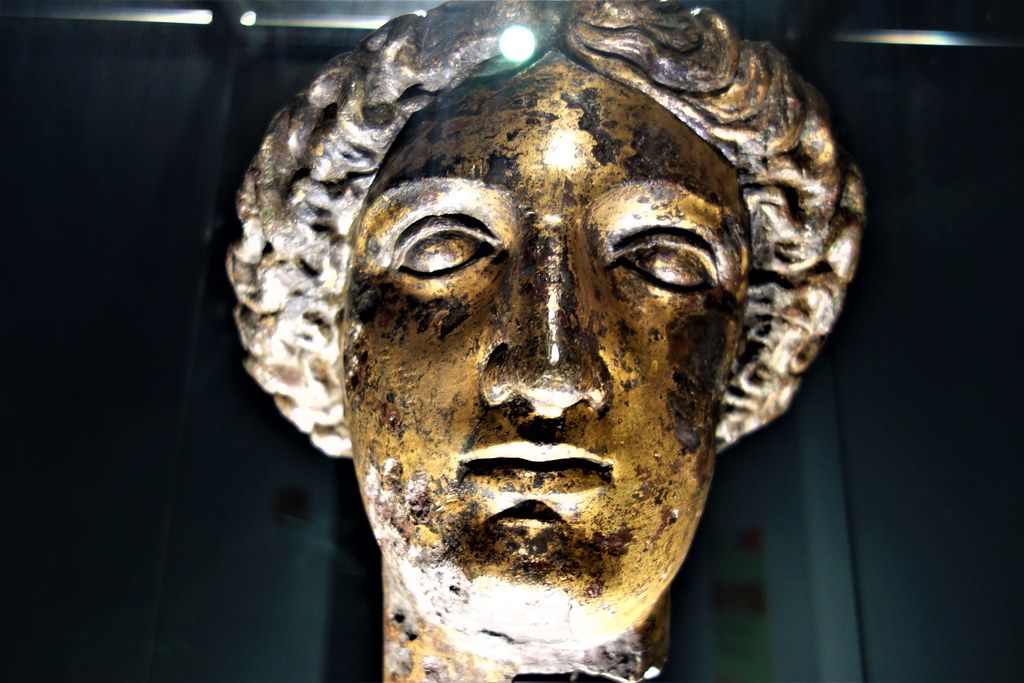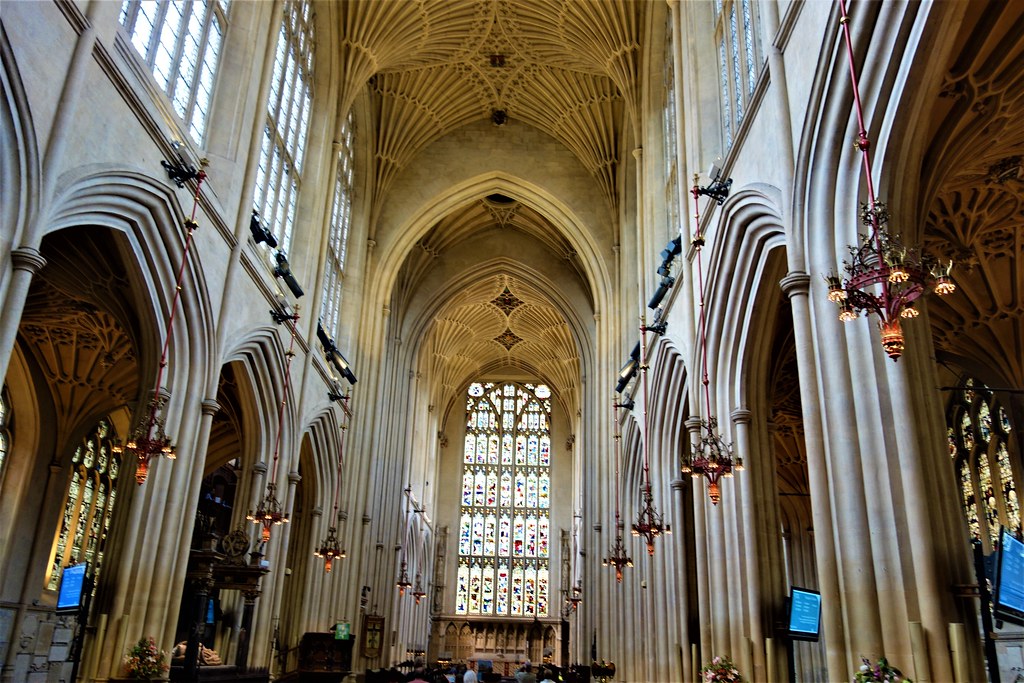Day Tour of Bath
Head of Roman God, Sulis Minerva
This evening, I am reprising a one-day tour of Bath, in S.W. England.This city is best known for it's Roman origin and bath plus extensive Georgian architecture from the 18th/19th centuries.
Bath Abbey
First visit was Bath Abbey which is correctly known as the Abbey Church of St Peter and St Paul, an Anglican Parish Church.
History of the Abbey site can be summarised as follows:
- There was an Abbey Church in Bath dating from around 757 AD which was part of a Benedictine monastery. This may have existed alongside the earlier convent founded by Abbess Bertana. The first King of all England, King Edgar was crowned on this site in 973 . The service set the precedent for the coronation of all future Kings and Queens of England.
- A massive Norman cathedral replaced the earlier Saxon building in the 11th/12th centuries.
- After the dissolution of the monasteries in 1539 by order of King Henry VIII, the Abbey lay in ruins for more than 70 years. In 1616 repair work was undertaken which brought the building into use as a parish church. In the 1830s, local architect, George Manners added new pinnacles and flying buttresses to the exterior and inside, built a new organ on a screen over the crossing, more galleries over the choir and installed extra seating.
- Famous architect, Sir George Gilbert Scott transformed the Abbey interior during the period 1864-1874 to conform with his vision of Victorian Gothic architecture. At this time the ancient wooden ceiling over the nave was replaced with impressive stone fan vaulting which remains evident today.
- The church has two organs and a peal of ten bells. The west front includes sculptures of angels climbing to heaven on two stone ladders.
Visitors to the Abbey today are rewarded with an experience of light and space combined with a heritage stretching back about 1200 years.
Roman Baths
Next to the nearby Roman Baths, a video clip of which is provided below.
The Romans occupied most of mainland U.K. from around AD 43 to AD 410 from which period we have a massive physical legacy of roads, ruins, settlements, inscriptions, coins, amphitheatres and cities plus military sites such as Hadrian’s Wall and the Antonine Wall.
Modern-day Bath was known as Aqua Sulis, a recreation themed settlement centred on the hot springs which emerge from deep within the earth. More information as follows:
- The water flows at a rate of 250,000 gallons per day at temperature of 46 degrees centigrade (115 F.) and contains 43 minerals.
- The construction demonstrates advanced hydraulic engineering skills of the Romans in the art of taming natural springs.
- Building of the Baths and temple was completed by around AD 75. In subsequent periods the original simple but elegant structure was modified and extended to include a laconium (circular room with dry, hot air), a cold plunge Circular Bath and new suite of baths at the east end.
- A religious site dedicated jointly to the local deity Sul (from which Aqua Sulis is derived) and the Roman goddess Minerva.This was a destination for pilgrims seeking guidance of Sulis Minerva and healing in curative waters.The facility was open to a wide range of the populace, from age 18 months to 86 years, both military and civilian.
- At the centre of Aqua Sulis was a classical temple dedicated to the deities mentioned above.
- The temple was designed so the hot springs arose from the ground within the temple courtyard with the water channelled into an elaborate bathing facility.
- Military tombstones have been found in the locality but the site may have been used by the Roman Army for convalescent and recuperative purposes.
Today, the Roman Baths are a popular visitor attraction. There is also a commercial bathing facility nearby where visitors can bath in the same, naturally heated waters.
Afternoon Tea at Pump Room, Bath
Group members took opportunity to avail of afternoon tea at the pump Room whilst listening to the Pump Room Trio at the elegant Pump Room Restaurant.
Bath Architecture
The dominant architectural style in Bath is Georgian which evolved from the Palladian revival style that became popular in the early 18th century. Key material used for construction was the golden-coloured bath stone. Demand for property and driver of wealth was visitor numbers patronising the spa facilities during the late 18th century.










Comments
Post a Comment